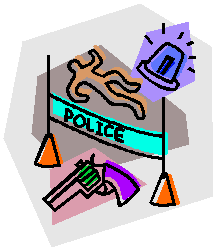 |
What is Forensic Science? |
 |
What is Forensic Science? |
The American Heritage Dictionary of the English Language defines forensics as the use of science and technology to investigate and establish facts in criminal or civil courts of law. The Department of Forensic and Investigative Science at the University of Central Lancashire says that forensic science covers the areas of science that are relevant to the law. It is primarily involved in gathering scientific evidence proving that a crime has occurred, and by whom it was committed. The evidence is acquired by utilizing certain areas of biology, chemistry, analytical science, and mathematics. Forensic science can include many different areas of study. They include:
 |
Firearms and Toolmark Identification | This type of examination involves identifying characteristics between firearms and their projectiles, and the projectiles and their targets. This typically includes matching bullets to the gun they were fired from. Toolmark identification involves identifying characteristics between tools and the object on which it was used. Explosives and imprint evidence are also included in this category. |
 |
Forensic Psychiatry and Profiling | The psychiatry aspect involves mental illness and disorder, what creates mental illness and disorder, and its diagnosis and treatment. Profiling can be defined as examining a crime scene to come up with a personality profile of the offender. |
 |
Questioned Document Examination | This involves all relationships that may exist between document and inscription and how it relates to a person or sequence of events. This includes forgery, counterfeiting, and handwriting analysis. |
 |
Criminal Law | Criminal Law defines offenses under a codified system of laws and punishments. It is basically where we define what a crime is and how it goes about being prosecuted. |
 |
Personal Identification | This is the basis for how an individual is identified as being at the crime scene or not. Types of identification are fingerprints, DNA analysis, and odontology. |
 |
Forensic Photography | This is basic photography as it applies to investigative work. For example, it is used at the crime scene and during autopsies. |
 |
Crime Scene Processing | This includes all aspects of forensic science and how they come together when searching a crime scene, collecting evidence, tagging and bagging evidence, and analyzing evidence in the lab. |
Since there are so many different aspects to forensic science, I have decided to concentrate on personal identification. In particular I would like to discuss DNA analysis: how it is used in solving crimes, and how it relates to biotechnology.
This is a site created for ISSI470, an academic course at Monmouth College.
